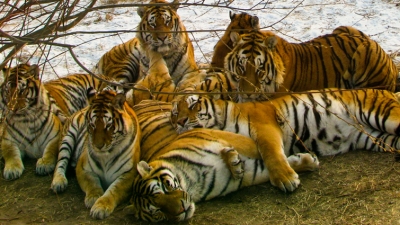
Tigers have striped skin, not just striped fur. Like our fingerprints, these stripes are unique to reach individual tiger. In other words, no two tigers have the same pattern of stripes. Tigers can be identified using their distinct pattern of stripes and facial markings. Their coats provide camouflage while hunting prey at night.
This allows researchers who study them in the wild to identify and count individual tigers. They use remote cameras to take pictures of the animals when they walk by. Using this method, tiger experts estimate that only about 3,400 wild tigers remain across their Asian homeland.
It’s not just their fur that’s inked with black stripes. When we have to sedate a tiger to treat an injury or do dental work, we shave their fur. It’s always surprising to see that their skin almost looks like it’s been tattooed: it has the same striped pattern as its fur!
So if stripes camouflage tigers from potential prey, why are some of them white? Don’t they stand out in the jungle, even with their stripes?
Yes, they do! Because we’ve seen them on TV or in wildlife tourist attractions, we may think they’re common, but they’re not. A genetic mutation in Bengal tigers gives them their milky white fur. Both parents must carry the same very rare gene to produce white cubs. White tigers are bred to relatives in captivity to attract tourists — and inbreeding produces unhealthy offspring.
Picture Credit : Google



